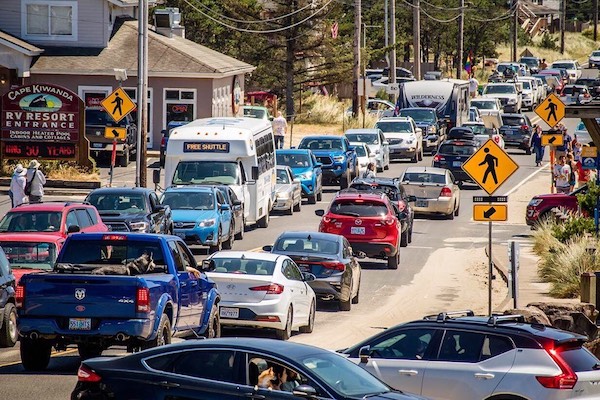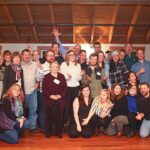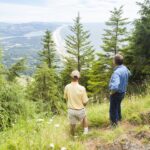Brand Story-How a new approach to tourism benefits livability and economic prosperity.
The concept of overtourism first arose from Europe’s most popular destinations, such as Venice, Italy; Barcelona, Spain; and more recently, Iceland. By definition, overtourism means that the number of visitors has become so overwhelming, that it deteriorates quality of living to an unacceptable level, or threatens or damages fragile environments.
Although not to the extent of European cities, Oregon is no stranger to overtourism. Popular summer vacation destinations, such as the North and Central Coast, Columbia River Gorge and Bend see their share of congestion.
Part of the problem lies with the traditional tourism model. Commonly referred to as “heads in beds,” its marketing simply encourages more visitors to a destination. While helpful for convention areas, pure tourism economies or off-season tourism, this type of continuous marketing can undermine the livability of communities, particularly in rural regions that do not have the capacity to manage a high influx of summer visitors.

Yet how can tourism be adapted in a way that will not hurt the economies, businesses and livelihoods reliant on visitor spending? Based on experiences gathered by Tillamook Coast Visitors Association, here are three strategies that can help communities.
Tourism is a $10.9 billion industry that directly employs 100,000 Oregonians, and brings $1.2 billion in state and local tax revenue. The businesses that rural communities depend on and value, from grocery stores to coffee shops, would disappear without visitor spending to support them. So, it is crucial for tourism organizations to reach out to communities and work together to create a plan that ensures both livability and economic prosperity.

Tourism Strategies for Oregon Communities
1) Hold community listening sessions
In tourism, particularly in rural areas, little gets done without strong relationships, and for tourism organizations, that first means listening. Convene meetings in communities to gather feedback on how tourism is impacting livability and suggestions for improving the situation. In Tillamook County, the Kiwanda Corridor Project in Pacific City brought together community members, business owners, park departments, fire districts, county government representatives, nonprofits and the county’s tourism organization to discuss ways to reduce traffic congestion, increase visitor parking and provide additional restrooms and trash receptacles in summer.
2) Adopt a community-based destination management plan
Destination management is a community-based, collaborative approach to tourism. The Kiwanda Corridor Project, primarily a tourism project, also incorporates community improvements, such as sidewalks, parks and multi-modal pathways. Many of these elements can be funded through lodging tax dollars paid for by visitors.
Tillamook Coast Visitors Association has been working with communities in Tillamook County to help them develop their own destination management plans. This gives residents a voice in the types of infrastructure and amenities they want developed to improve livability and provide a more stewardship-focused, educational experience for visitors.
Destination management does not eliminate marketing: Visitor education and off-season visitation rely heavily on marketing. But the main focus is on management.
3) Create alternative transportation options
Traffic congestion was a major element of the Kiwanda Corridor Project. In summer, cars turned the area’s rural beach roads into parking lots.
The Tillamook County Transportation District needed a solution and introduced a free bus shuttle in Pacific City. The shuttle complemented Tillamook County’s existing bus service, The Wave, which was designed for longer trips, such as from Portland and Lincoln City to Cannon Beach. The next year, the County added a free summer trolley service that operates Friday through Sunday (and Monday holidays) from Memorial Day to Labor Day weekends. The trolley can also be rented year-round for events.
Now, visitors staying at hotels and vacation rentals can leave their cars and hop on the shuttle from Pacific City all the way up to Sitka Sedge State Park or down to Bob Straub State Park. Ridership has exceeded expectations and been so successful that other towns in the county, including Rockaway Beach and Manzanita, are also seeking summer trolley service.
Brand stories are paid content articles that allow Oregon Business advertisers to share news about their organizations and engage with readers on business and public policy issues. The stories are produced in house by the Oregon Business marketing department. For more information, contact associate publisher Courtney Kutzman.




